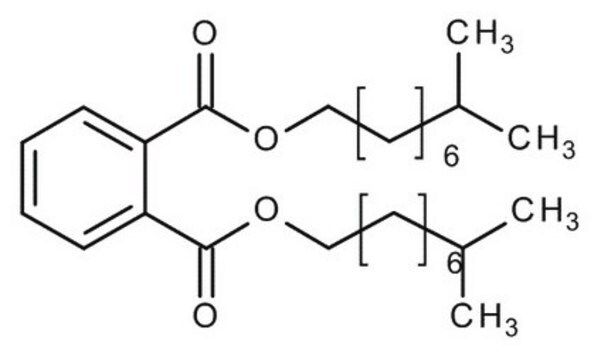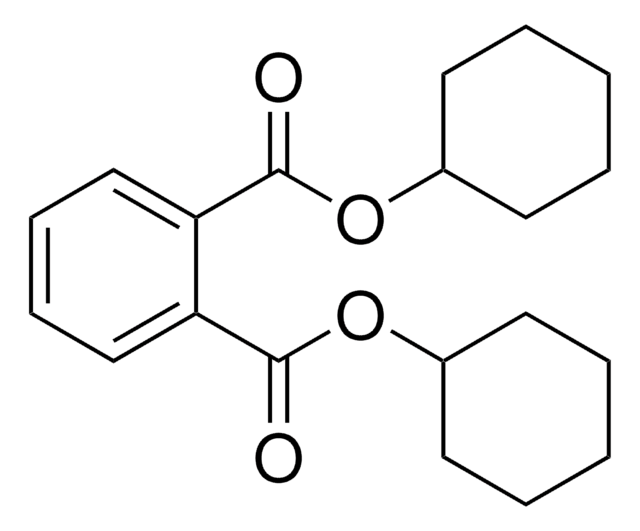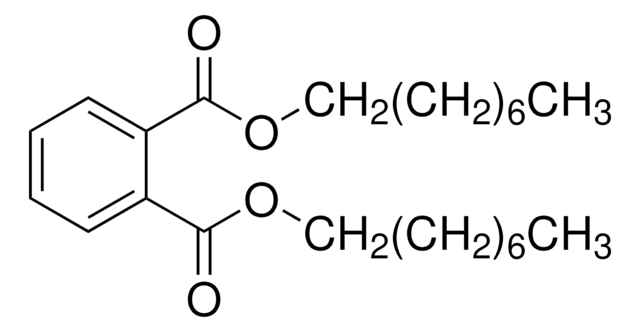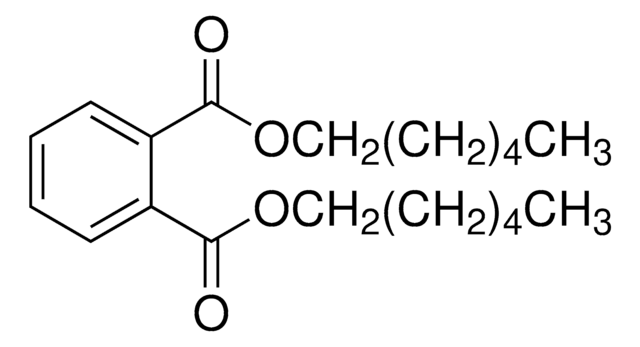376663
Diisononyl phthalate
ester content ≥99 % (mixture of C9 isomers), technical grade
Synonym(s):
DINP
About This Item
Recommended Products
grade
technical grade
Quality Level
vapor pressure
1 mmHg ( 200 °C)
form
viscous liquid
composition
ester content, ≥99% (mixture of C9 isomers)
impurities
≤0.15% dioctyl phthalate (typical)
refractive index
n20/D 1.485 (lit.)
density
0.972 g/mL at 25 °C (lit.)
SMILES string
CC(C)CCCCCCOC(=O)c1ccccc1C(=O)OCCCCCCC(C)C
InChI
1S/C26H42O4/c1-21(2)15-9-5-7-13-19-29-25(27)23-17-11-12-18-24(23)26(28)30-20-14-8-6-10-16-22(3)4/h11-12,17-18,21-22H,5-10,13-16,19-20H2,1-4H3
InChI key
HBGGXOJOCNVPFY-UHFFFAOYSA-N
Looking for similar products? Visit Product Comparison Guide
General description
Storage Class Code
10 - Combustible liquids
WGK
WGK 1
Flash Point(F)
456.8 °F - closed cup
Flash Point(C)
236 °C - closed cup
Regulatory Listings
Regulatory Listings are mainly provided for chemical products. Only limited information can be provided here for non-chemical products. No entry means none of the components are listed. It is the user’s obligation to ensure the safe and legal use of the product.
EU REACH SVHC Candidate List
EU REACH Annex XVII (Restriction List)
EU REACH Annex XIV (Authorisation List)
Choose from one of the most recent versions:
Already Own This Product?
Find documentation for the products that you have recently purchased in the Document Library.
Customers Also Viewed
Our team of scientists has experience in all areas of research including Life Science, Material Science, Chemical Synthesis, Chromatography, Analytical and many others.
Contact Technical Service










